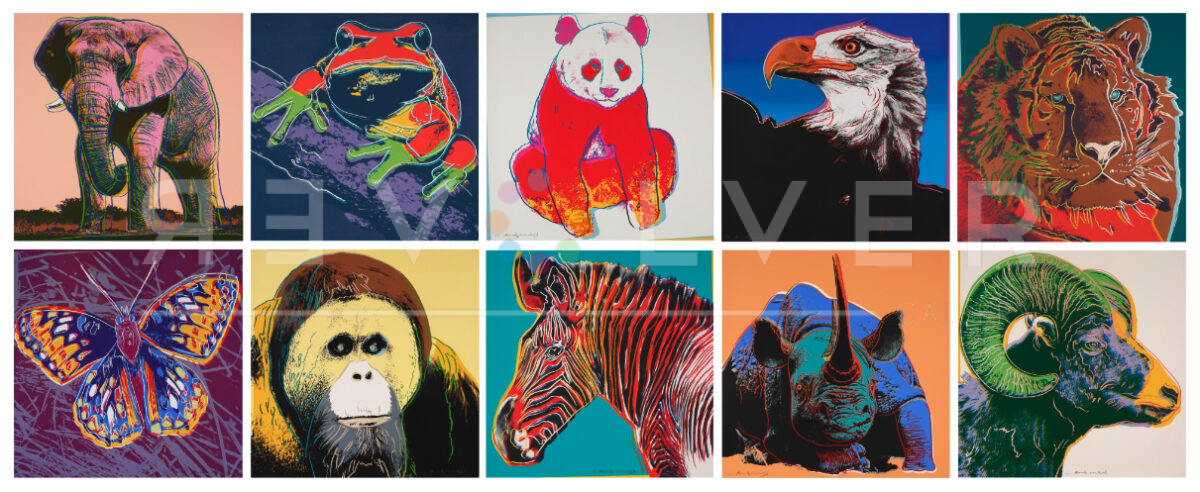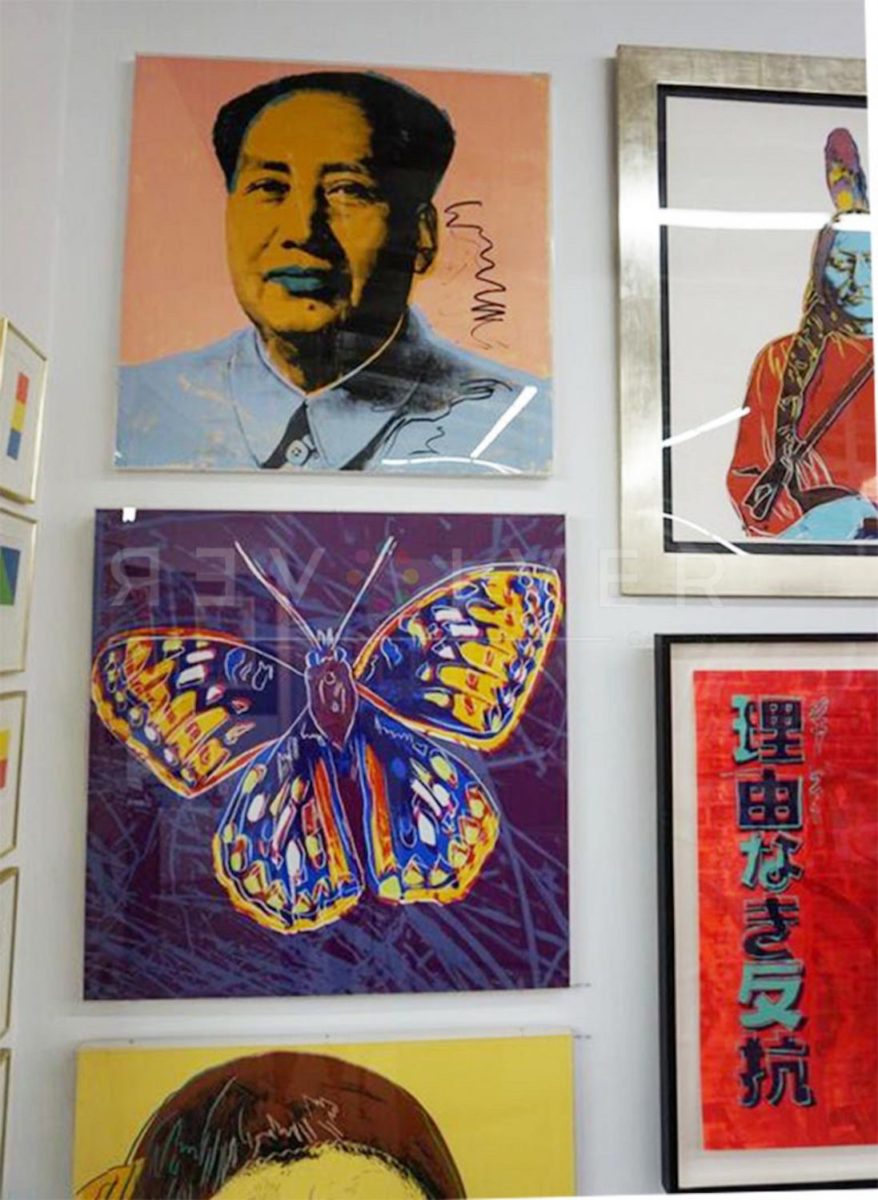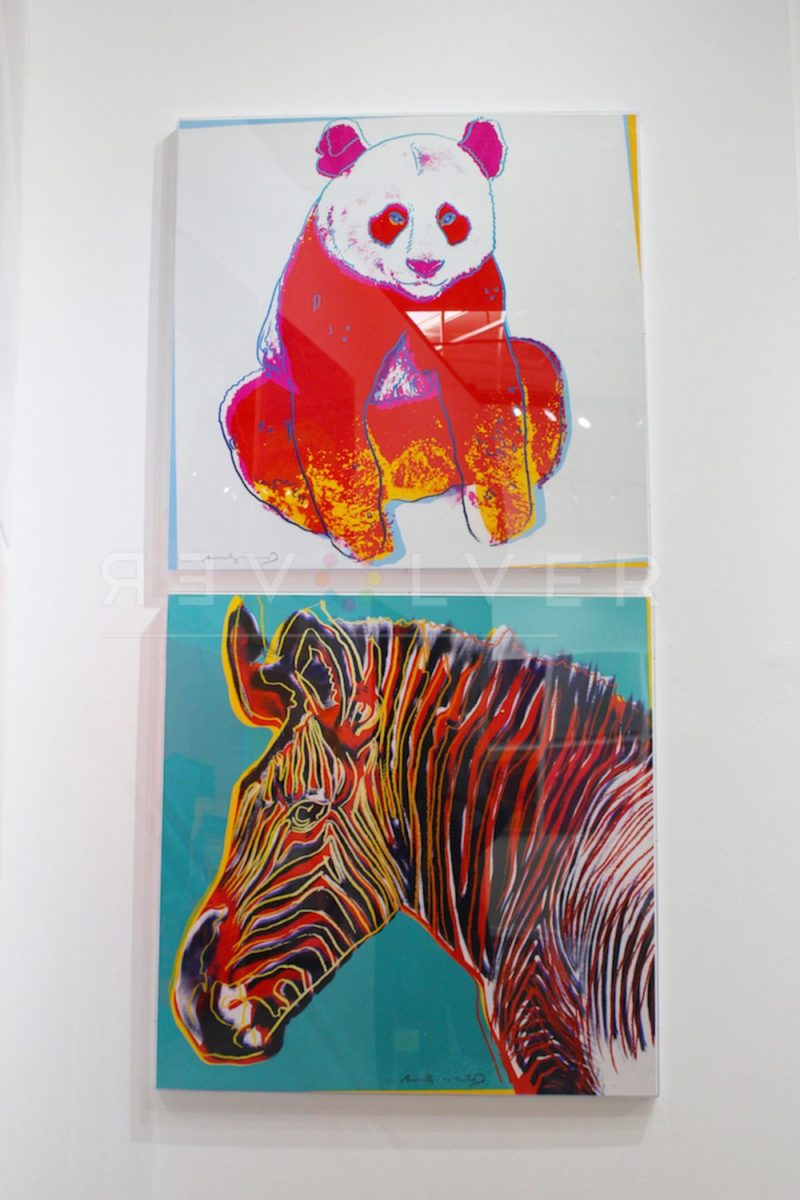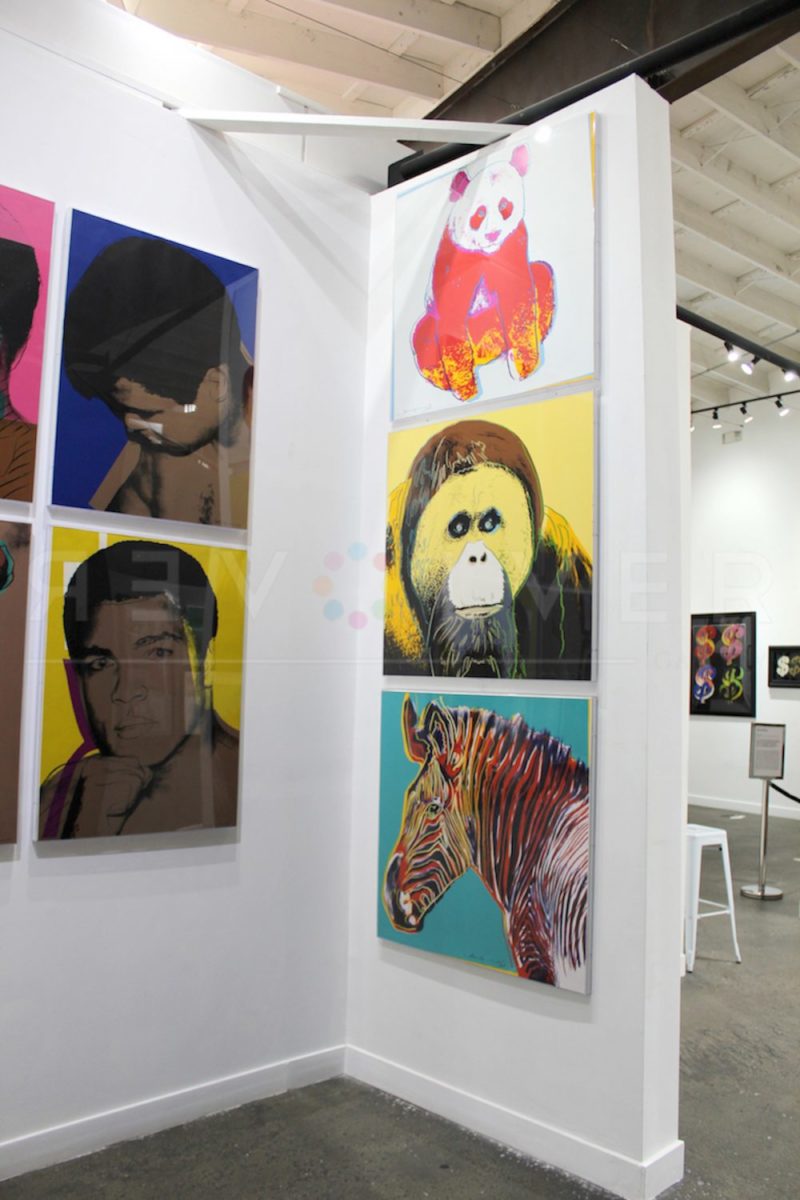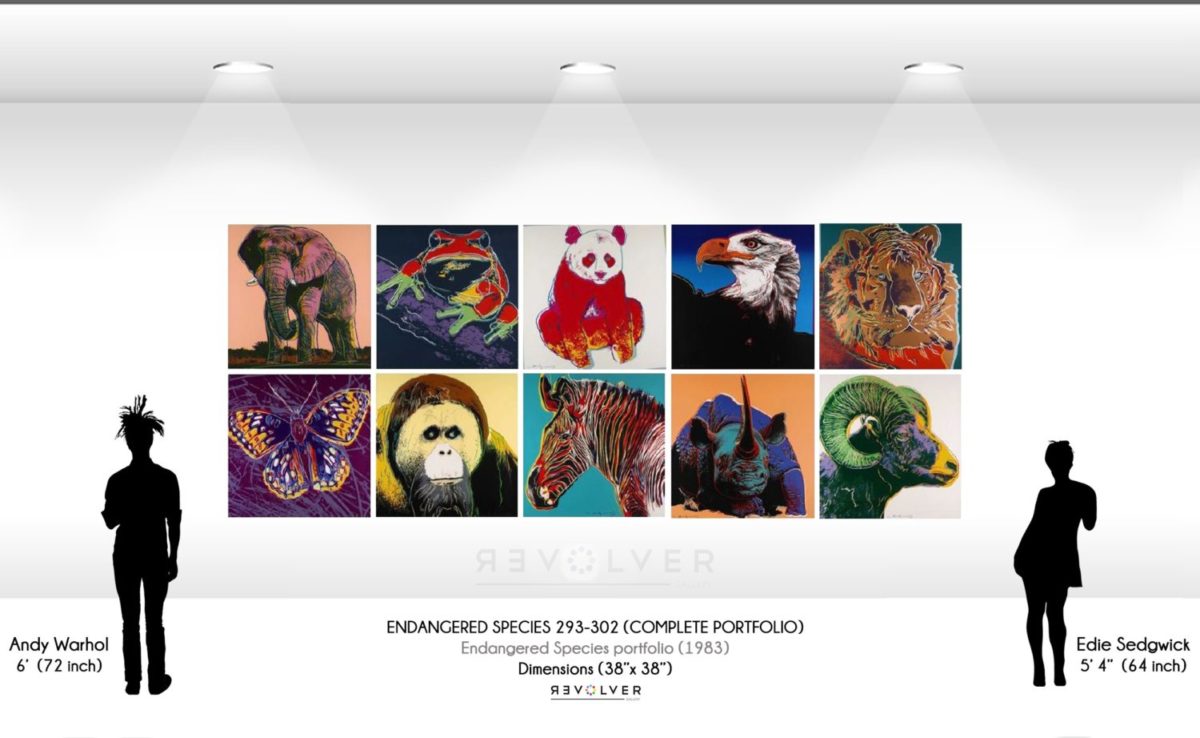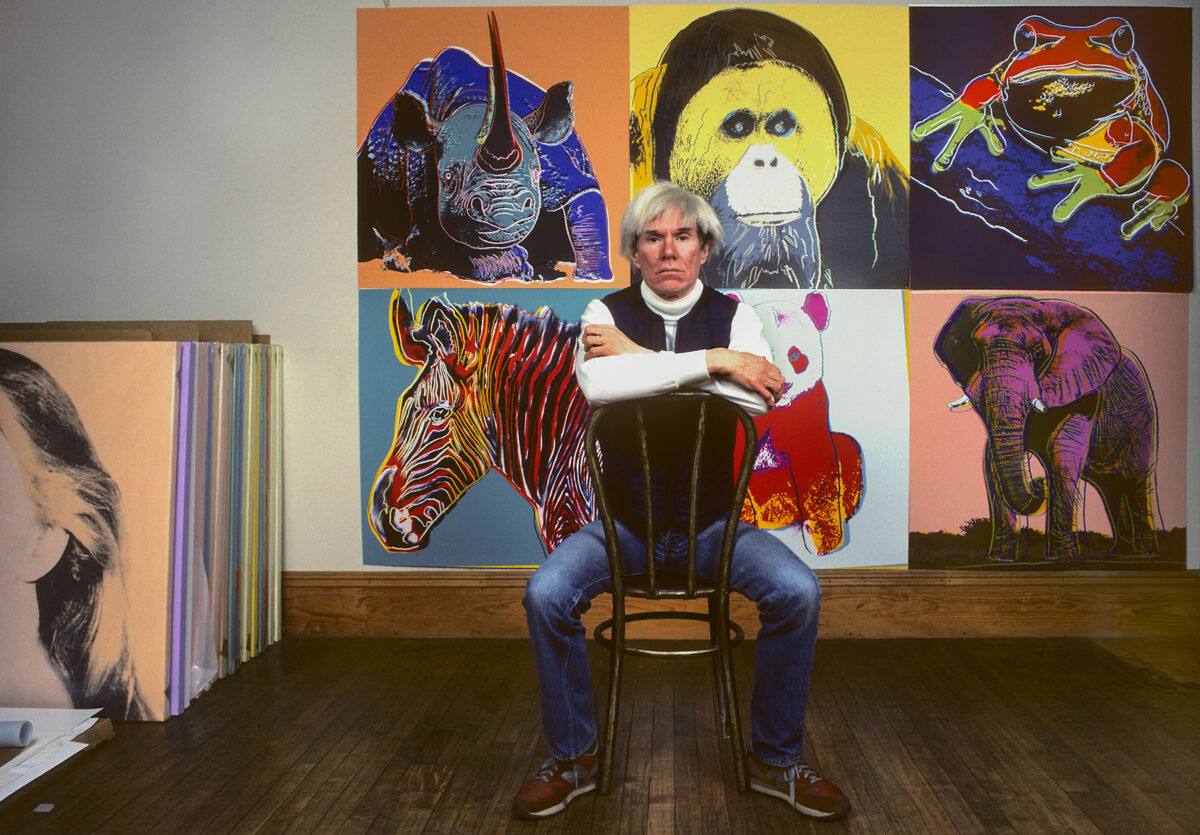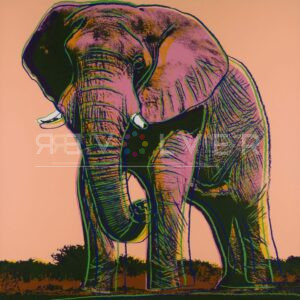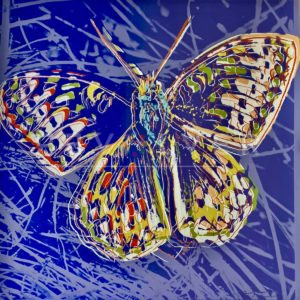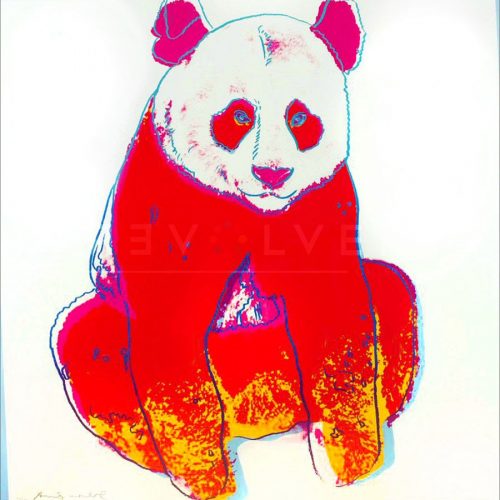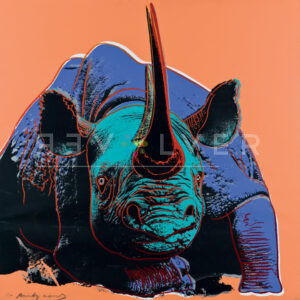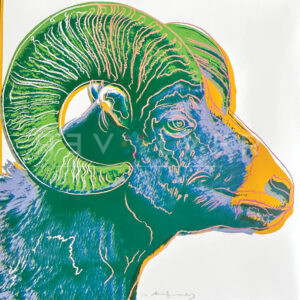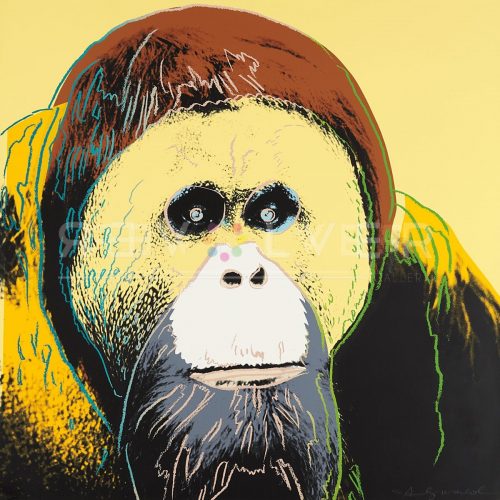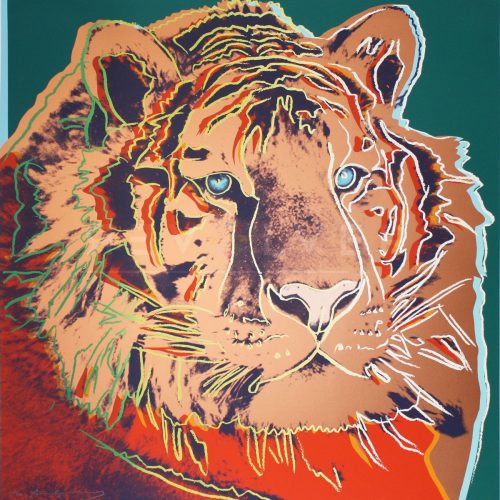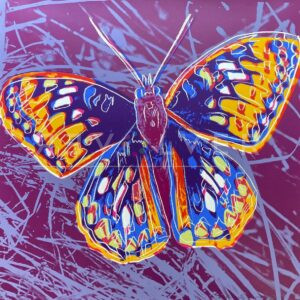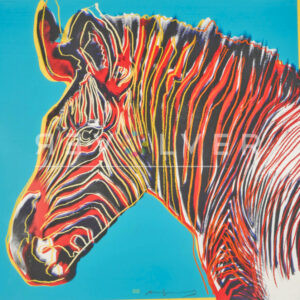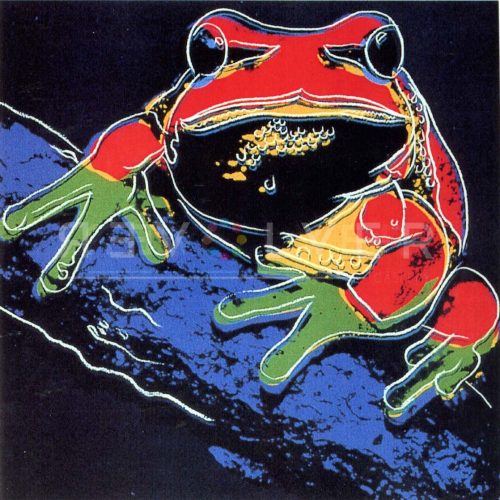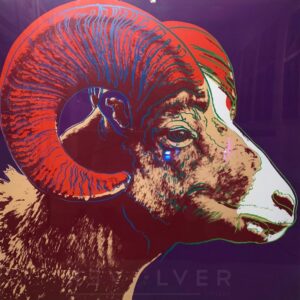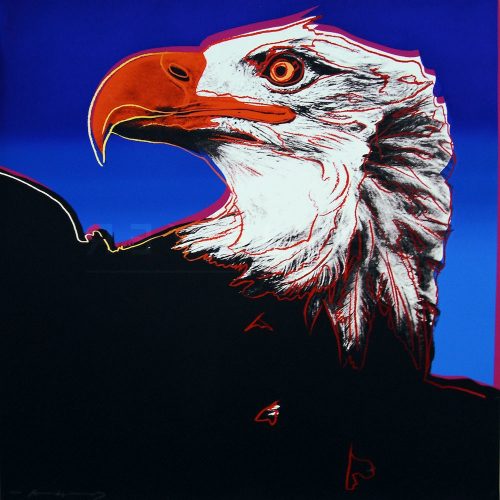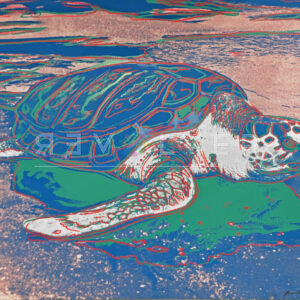Andy Warhol’s Endangered Species portfolio is a series of 10 screenprints produced in 1983. Endangered Species was commissioned and published by Ronald Feldman, acclaimed New York gallerist and art dealer, who was the catalyst for some of Warhol’s most lauded work of the 1980s, including his Myths (1981) and Ads (1985) series. Besides being a tastemaker, Feldman was known as an impassioned political advocate and philanthropist, and his commission for this set reportedly came from conversations he and Warhol had on conservation and coastal erosion. Coincidentally, 1983 seemed like the Year of Animals for Warhol. He would produce two additional sets of works based on animals that year: Fish, a collection of wallpaper (silk scarves and paper prints were also produced) to be used as the backdrop for an exhibition of the artist’s work by frequent Warhol Affiliate, Bruno Bischofberger, and Vanishing Animals, illustrations accompanying text written by San Diego Zoo pathologist, Kurt Benirschke, that were eventually published in book form in 1986.
As its name would suggest, Endangered Species contains portraits of animals on the brink of extinction through habitat destruction, overuse of commercial or sporting purposes, or other manmade or natural causes, as designated by the United States’ Endangered Species Act (ESA). The ESA was signed into law just ten years prior to Warhol’s portfolio by President Richard Nixon and represents a massive legislative shift in ecological conservation efforts both in the US and internationally. The portfolio highlights ten animals, in order: African Elephant, Pine Barrens Tree Frog, Giant Panda, Bald Eagle, Siberian Tiger, San Francisco Silverspot, Orangutan, Grevy’s Zebra, Black Rhinoceros, and Bighorn Ram. As of 2021, six of those ten animals are still threatened with possible extinction.
Andy Warhol was, of course, no stranger to using animals as subjects of his artwork. In fact, one of his earliest published works was 25 Cats Named Sam (1954), a collection of sketches of house cats using his then-employed blotted ink technique, with lettering supplied by his mother, Julia Warhola. When Warhol’s print-publishing company, Factory Additions, was founded in 1967, one of its earliest creations was the now iconic Cow wallpaper series. Additionally, Warhol created a series of paintings in 1976 entitled Cats and Dogs, including flattering portraits of his own pet dachshunds, Amos and Archie.
Having these portraits done by Warhol, who was the premier celebrity portraitist of the age, lends these animals a regal aura, commanding attention and recognition. The ability of these prints to direct that recognition is in no small part due to the stunning Pop Art color work Warhol forwarded at this late stage of his career. One only has to look at his Goethe and Dollar Sign series from the previous year, or his prints of actress Ingrid Bergman from the same year (1983) to situate Endangered Species in a period marked by a vibrant zenith in Warhol’s capacities as a colorist. The animals themselves really do “Pop,” standing out from their backgrounds through strong contrasting and complementary colors with a range as heterogeneous as the types of animals presented, whether they be mammalian, amphibian, avian, or insectile.
Andy Warhol’s Endangered Species portfolio stands as one of the strongest representations of the artist’s abilities, and expresses the climactic development of his technique in the last decade of his life. These prints are among the most desirable works for Warhol collectors. Revolver Gallery is also in possession of unique prints from the series, including a San Francisco Silverspot trial proof, and the Bighorn Ram trial proof.
Andy Warhol’s Endangered Species as Part of His Larger Body of Work
In 1983 Warhol was commissioned by his friend and publisher Ron Feldman and his wife Freyda to create this series. Both Freyda and Ronald were celebrated political activists who were very active philanthropists. In 1983, they asked Warhol to create a portfolio of endangered species to raise environmental consciousness. Warhol fondly referred to this series as his “animals in makeup,” given the bold pop colors he uses to portray the animals as large than life. Compiled in Vanishing Animals, Warhol depicts a collection of endangered animals, detailing the animals’ backgrounds and what kind of impact their extinction would have on the existence of humanity. Warhol’s Endangered Species full suite was printed in 1983 by Rupert Jasen Smith in New York. This portfolio of ten screenprints is printed on Lenox Museum Board, and all prints are signed and numbered in pencil. Included in this suite are: FS II.293 to FS II.302.
Photo Credits: Warhol with Endangered Species screen prints, taken by Brownie Harris, 1982, The Factory, NYC.

